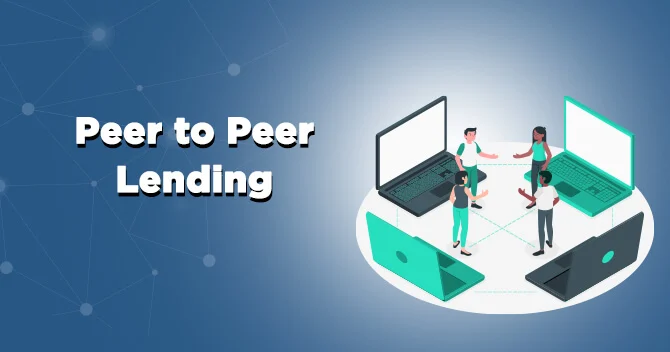Peer-to-peer lending platforms for refugee charities
Peer-to-peer lending platforms for refugee charities offer a transformative approach to accessing financial support and resources. These platforms serve as a direct channel for individuals and organizations to contribute to refugee initiatives, circumventing traditional bureaucratic barriers and administrative costs. By directly connecting donors with refugee communities, these platforms enhance transparency and accountability in charitable giving, ensuring that donations make a real difference on the ground. Furthermore, peer-to-peer lending empowers grassroots refugee-led initiatives by providing them with essential financial resources, allowing refugee organizations to expand their reach and impact. With the potential to foster sustainable giving practices and foster global solidarity, peer-to-peer lending platforms have the capacity to revolutionize the way refugee assistance is provided, bringing about positive change and meaningful support for displaced populations worldwide.

What is peer-to-peer (P2P) lending?
Peer-to-peer (P2P) lending, a form of financial technology, enables individuals to lend to or borrow from each other directly, eliminating the need for traditional banking intermediaries.
The proliferation of websites facilitating P2P lending has significantly popularized this alternative financing model.
Also referred to as “social lending” or “crowd lending,” this practice emerged in 2005 and has since seen a surge in competition, with platforms like Prosper, Lending Club, Upstart, and StreetShares entering the fray.
Important Notes
P2P lending platforms serve as intermediaries, connecting borrowers directly with investors. These platforms establish the terms and conditions of loans and facilitate the transactions.
Investors participating in P2P lending seek higher returns on their savings compared to traditional bank accounts or certificates of deposit.
On the other hand, borrowers turn to P2P lending as an alternative to traditional banks or to secure loans with more favorable interest rates.
MVM car managers (news page)
P2P lending typically experiences higher default rates compared to traditional finance avenues.
Understanding the Peer-to-peer lending platforms for refugee charities
In the realm of refugee charity, peer-to-peer (P2P) lending platforms serve as a direct link between those seeking assistance and those willing to provide support. These websites facilitate connections between borrowers—often individuals or families displaced by conflict or persecution—and lenders, who are typically individuals seeking to make a meaningful impact with their financial resources. Each platform sets its own terms and conditions, offering a range of interest rates based on the borrower’s creditworthiness and financial profile.
Here’s how it works: A lender creates an account on the platform and deposits funds earmarked for loans. Meanwhile, a refugee applicant submits their financial information to determine their risk category and the corresponding interest rate. The applicant then reviews and selects from available loan offers, with money transfers and repayments managed through the platform. Some platforms specialize in specific borrower categories, such as small business owners or individuals seeking medical financing.
Initially, P2P lending emerged as a means to provide credit access to individuals excluded by traditional financial institutions or to consolidate debts, including student loans. Over time, these platforms have diversified their offerings to include options for consumers seeking to refinance credit card debt or fund home improvements and vehicle purchases. Interest rates vary depending on the borrower’s creditworthiness, with rates for those with excellent credit often lower than traditional bank rates, while rates for those with poor credit may be higher.
For lenders, P2P lending presents an opportunity to earn competitive returns on their capital, surpassing the rates offered by standard savings accounts or certificates of deposit. Notably, some platforms enable lenders to start with minimal investment amounts, allowing for greater accessibility and inclusivity in supporting refugee initiatives.

Special considerations: Peer-to-peer lending platforms for refugee charities
When engaging with Peer-to-peer lending platforms for refugee charities, individuals looking to lend must be aware of the potential for borrower defaults, a concern shared with traditional banking institutions. Research into P2P lending has revealed that default rates among borrowers on these platforms are notably higher compared to conventional financial institutions, sometimes exceeding 10%. In contrast, the S&P/Experian composite index of default rates for various loans to U.S. borrowers has seen a decline to 0.50% in May 2022, down from approximately 1.96% a decade earlier.
For any consumer or investor considering participation in P2P lending, it’s essential to factor in transaction fees. Each platform operates differently, but fees and commissions may be levied on lenders, borrowers, or both parties involved. Similar to traditional banks, these platforms may impose charges such as loan origination fees, late payment fees, and fees for declined payments. Understanding these potential costs is crucial for making informed decisions about lending activities on P2P platforms.
Human Security: Providing Basic Needs
To tackle the complex issue of severe poverty effectively, it’s essential to embrace a comprehensive approach that addresses fundamental needs. Through the integration of diverse strategies, we can guarantee access to necessities such as food and water, thereby minimizing vulnerability to diseases and bolstering human security.
Entrepreneurship as a Key Solution
Empowering marginalized communities through entrepreneurship is a crucial component of poverty alleviation efforts. Entrepreneurship education serves as a cornerstone in providing individuals with the skills and mindset needed to build sustainable livelihoods. By fostering self-reliance and equipping individuals with the tools to create economic opportunities, we lay the foundation for lasting prosperity and resilience against the cycle of poverty.
Peer-to-Peer Lending Platforms: A Catalyst for Economic Empowerment

Decentralizing Aid Distribution: Empowering Local Entrepreneurs
Peer-to-peer lending platforms for refugee charities present a revolutionary avenue for decentralizing aid distribution and uplifting refugee entrepreneurs. By directly linking lenders with borrowers, these platforms grant access to financial resources that would otherwise be inaccessible. This democratization of capital allocation encourages community-driven endeavors and promotes grassroots entrepreneurship, thereby nurturing economic empowerment within refugee communities.
Contributing to Change
Peer-to-peer lending platforms empower individuals to actively engage in poverty alleviation endeavors, facilitating impactful change. Through innovative financing models and backing community-led initiatives, individuals become drivers of positive transformation. These platforms act as catalysts for economic empowerment, facilitating resource mobilization, collaborative problem-solving, and fostering sustainable development on a local scale.
Empowering charities Through Peer-to-Peer Lending Platforms
In the context of refugee charity, Peer-to-peer lending platforms for refugee charities have emerged as powerful instruments, not solely for financial transactions but also for driving social impact. Within the realm of charitable giving, these platforms present distinct opportunities to transform how individuals and organizations support significant causes. Let’s delve into how peer-to-peer lending can elevate the efficiency and outreach of charitable endeavors within refugee communities.
Direct Engagement and Transparency
Among the notable benefits of peer-to-peer lending platforms in refugee charity lies in the direct engagement it fosters between donors and beneficiaries. In contrast to conventional donation channels entailing multiple intermediaries, these platforms empower donors to directly link with individuals or communities in need. Such transparency not only cultivates trust but also guarantees that contributions make a palpable difference in the lives of those they aim to support.
Empowering Grassroots Initiatives
Peer-to-peer lending platforms empower grassroots initiatives within refugee charities by granting them access to vital financial resources. Charitable organizations and community projects facing challenges in securing funding through traditional avenues can utilize Peer-to-peer lending platforms for refugee charities to expand their donor base. By circumventing bureaucratic obstacles and intermediary fees, grassroots initiatives can allocate more resources directly to their intended beneficiaries, thereby optimizing the impact of charitable endeavors.
Encouraging Sustainable Giving
Peer-to-peer lending platforms for refugee charities offer another significant advantage: they promote sustainable giving practices. Unlike one-off donations that offer temporary relief, these platforms facilitate continuous support through recurring contributions or micro-loans. This sustainable approach empowers donors to create lasting change in the lives of recipients, nurturing meaningful, long-term impact within refugee communities.
Facilitating Global Collaboration: Peer-to-peer lending platforms for refugee charities
Peer-to-peer lending platforms for refugee charities transcend geographical boundaries, facilitating global collaboration in charitable endeavors. Donors from various parts of the world can unite to support causes they are passionate about, irrespective of their location. This global connectivity not only expands the pool of accessible resources but also nurtures cross-cultural understanding and solidarity in the pursuit of shared objectives within refugee aid efforts.
Conclusion: Harnessing the Power of Peer-to-Peer Giving
In conclusion, Peer-to-peer lending platforms for refugee charities stand as a transformative force in the sphere of charitable giving, offering direct engagement, empowerment of grassroots initiatives, encouragement of sustainable giving practices, and facilitation of global collaboration. With their potential to revolutionize philanthropy, these platforms open new avenues for fostering positive social change and constructing a more compassionate and equitable world for all involved.
read more: Peer-to-peer lending platforms for charities




